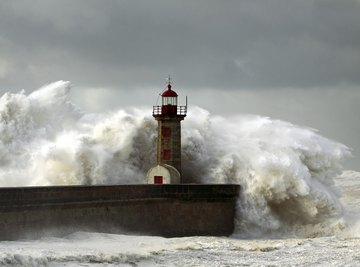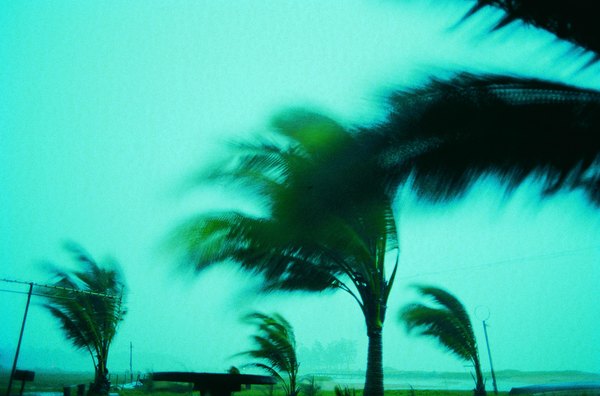
Hurricanes are one of nature’s most aggressive and impressive acts. These giant storms, which form over the Atlantic Ocean and eastern Pacific Ocean, unleash fury on their surroundings. The United States is threatened by hurricanes from June 1 through Nov. 30.
Due to this relatively long hurricane season, it is important to understand the hurricane weather conditions that result in these storms, especially to those who live on the coasts and in areas where hurricanes are most likely to hit. Understanding hurricane weather conditions is the first step in preparing to wait out the storm and prepare for its arrival.

Hurricane Weather Conditions
The recipe for a hurricane is a combination of warm, humid wind over tropical waters. The temperature of tropical waters must be at least 80 degrees F for up to 165 feet below the ocean’s surface. As this warm water meets the wind that blows west from Africa across the ocean, it causes the water to vaporize. The water vapor then rises into the atmosphere, where it cools and liquefies.
Read more about how a hurricane forms.
As it liquefies, it creates clouds called cumulonimbus clouds, which are tall columns of clouds that generate bands of thunderstorms--the perfect weather conditions to create a hurricane. As these clouds form, they produce a spiral wind pattern over the ocean’s surface. A cycle begins when rain from the thunderstorm falls to the ocean, where it is reheated and sent back into the atmosphere, giving increased energy to the growing hurricane.
Hurricane Facts and Stages
Hurricanes are generically called tropical cyclones. One of the little known hurricane facts is that they have four stages: a tropical disturbance, a tropical depression, a tropical storm and, finally, a tropical cyclone.
Read more about the stages of development of a hurricane.
A tropical disturbance occurs when the water vapors from the warm ocean water first rise and then condense in the atmosphere, releasing heat and thus energy to begin powering a hurricane. As this process continues, cumulonimbus clouds are formed into long columns extending high into the atmosphere.
When the clouds build, wind begins forming around a center point. As it moves across the ocean, this storm creates more and more thunderstorms, forming a tropical disturbance.

The next stage in the hurricane process is a tropical depression. As the cumulonimbus clouds force thunderstorms to higher elevations, the air at the top of the columns begins to cool, releasing energy in the form of heat. This warms the clouds beneath it and causes wind to move away from the center of the storm in a spinning fashion.
As this is repeated, the winds pick up speed, ranging anywhere from 25 to 38mph. A tropical storm follows a tropical depression when winds measure more than 39mph. The process for tropical storm formation is the same as the process for a tropical depression, with winds continuing to blow at faster speeds and circulating around the eye of the storm.
The Final Stage
Finally, a tropical cyclone (most often referred to as a hurricane) when it is over the Atlantic Ocean, takes place when the speed of the wind reaches 74 mph or more. At this point, the hurricane reaches 50,000 feet or more into the atmosphere and is at least 125 miles across.
Winds that move from east to west, known as trade winds, push the hurricane westward. This is why so many hurricanes hit the Caribbean, Gulf of Mexico, and the coastal regions in the southeastern United States.
Another one of the more interesting hurricane facts is that as they hit land, they typically lose strength. This is because they are no longer over the warm waters required to fuel them. However, they still pose a significant threat to the areas over which they make landfall, in the form of wind and water damage.
References
About the Author
A Michigan native, Lee Cook has been writing professionally for six years. Cook earned a Bachelor’s degree in practical writing from Western Michigan University and has published a story on hospice care in the book Living Well, Dying Well. She writes for several websites.
Photo Credits
Zacarias Pereira da Mata/iStock/Getty Images
